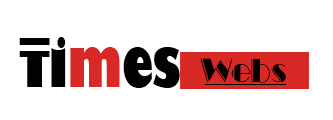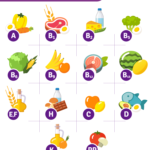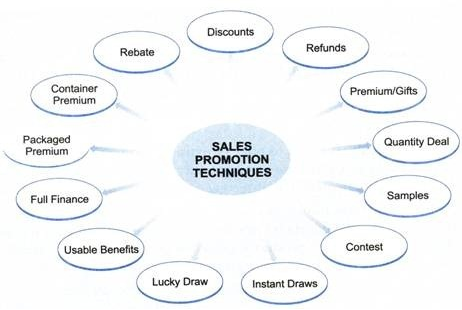Sales Promotion Activities
Sales promotion activities are conducted by a business to stimulate sales or provide extra value to distributors or customers over a short time period. They can include special offers and displays. They can also include contests, sweepstakes, samples, premiums, point-of-purchase displays, and loyalty programs.
Consumer sales promotions are a great way to attract new customers. They can be used to reward current loyal customers, to introduce a new product or service to existing ones, and to offload inventory quickly.
Product introduction
The product introduction phase is the initial stage of a marketing campaign. During this phase, companies introduce new products to the market with deals and discounts that encourage customer loyalty and generate brand awareness. This type of marketing strategy is designed to boost sales and increase revenue in a short period of time. The techniques used in this phase can have significant psychological effects that motivate consumers to act.
A well-designed product introduction process can help to maximize the ROI of a company’s investment. For example, by focusing on the development of an optimised design process before manufacturing, a company can reduce production costs, improve quality and ensure that its products will be successful in the market.
It is also important to consider how the product will be positioned in the marketplace. This can be a major factor in deciding how much to spend on the product launch and marketing efforts. Once the product has gained traction in the market, it enters the growth phase, where it experiences rapid user expansion and a widening of its availability.
The promotional strategies used during this phase can include professional selling, informational promotions and demonstrations, fairs and shows, and advertising exercises. These tactics can be a great way to boost your business’s sales and attract customers. They can also be effective in overcoming barriers to closing a sale, such as price concerns or perceived better offers from competitors.
Promotions for existing customers
There are several types of sales promotions that can be used to boost customer acquisition and retention. One of the most common is a discount. This type of promotion reduces a product or service’s cost, and is often accompanied by a specific marketing campaign. Coupons and vouchers are another form of sales promotion that can be personalized and are effective at increasing customer engagement. They are also more cost-effective than traditional advertising.
One important factor to keep in mind is that sales promotions should be limited time offers accompanied by a clear call-to-action. This will help create a sense of urgency and increase the likelihood that customers will respond to your offer. Additionally, it is essential to know who your audience is and what their goals are. The most effective sales promotions are tailored to a particular target audience and meet the business’s objectives.
A successful sales promotion strategy can be used to introduce a new product, attract new customers, and generate more revenue for a company. However, a company must be careful not to overdo it with promotions, as they can have a negative effect on the brand’s image and cause customers to view the business as cheap. In addition, the promotional tactics can lead to false sales data, which may skew the organization’s overall performance.
Promotions for new customers
Sales promotions are a great way to generate new business and increase sales. They can include coupons, free samples, discounts, premiums, product demonstrations, and point-of-purchase (POP) materials. These techniques can also encourage customer loyalty and increase brand awareness. However, sales promotion can become counterproductive if companies use them too often or don’t focus on customer needs. Moreover, they may damage a company’s reputation if customers perceive its products as less valuable than their standard price.
Sales promotion can be used to introduce a new product or service, or to boost sales during a season when products are expected to sell well. For example, a company can offer a free trial of its SaaS tool for new customers and encourage them to share the code with friends. This can help them overcome common barriers to closing a deal, such as budget constraints, time constraints, and seemingly better offers from competitors.
Another sales promotional tactic is a tripwire, which involves offering a low-priced item to attract prospects and convert them into paying customers. This can be a great way to gain trust and build long-term relationships with new buyers. It is important to remember that sales promotions are a short-term strategy and should be balanced with other marketing tactics. Otherwise, businesses can fall into a “sales promotion trap,” in which they rely on discounts to close deals and neglect their long-term goals.
Promotions for dealers
Sales promotions are a powerful tool to stimulate product demand, increase market share and improve customer service. Businesses use different techniques to attract customers, including discounts, freebies, coupons, competitions and loyalty programs. In addition to boosting product sales, these promotions can also create a sense of urgency or excitement and reduce risk.
Business-to-business (B2B) sales promotion techniques include trade shows, event marketing, trade buying allowances and training. These strategies are designed to attract channel members who conduct business with end-consumers. They can also increase brand awareness and improve product availability.
During the Christmas season, companies promote products to dealers using various sales promotion techniques. They can offer discounted prices, bundled products or even financing schemes. These techniques are aimed at reducing stock levels and increasing overall sales. The bundled discount strategy, for example, is an effective way to reduce unsold inventory.
Another great sales promotion technique is a buy one get one sale. This type of promotion motivates consumers to purchase multiple items, and it works well for new products or seasonal specials. Additionally, it can generate a lot of free publicity, especially when it involves social media. Other types of sales promotion include competitions or challenges, and e-mail blasts. These campaigns can be timed to maximize their effectiveness. A unified CRM can help manage these efforts and track metrics like sales goals versus actuals.







